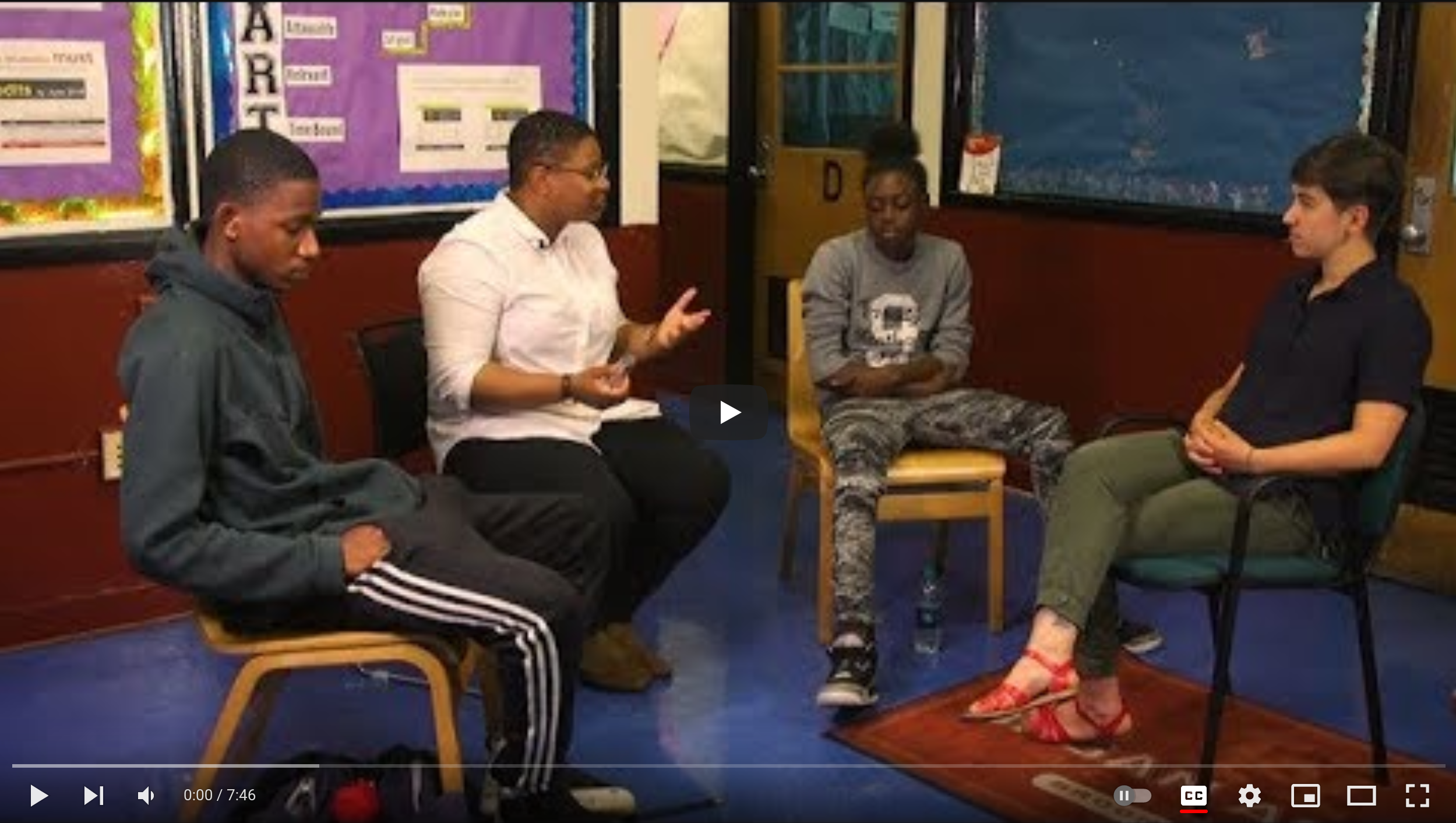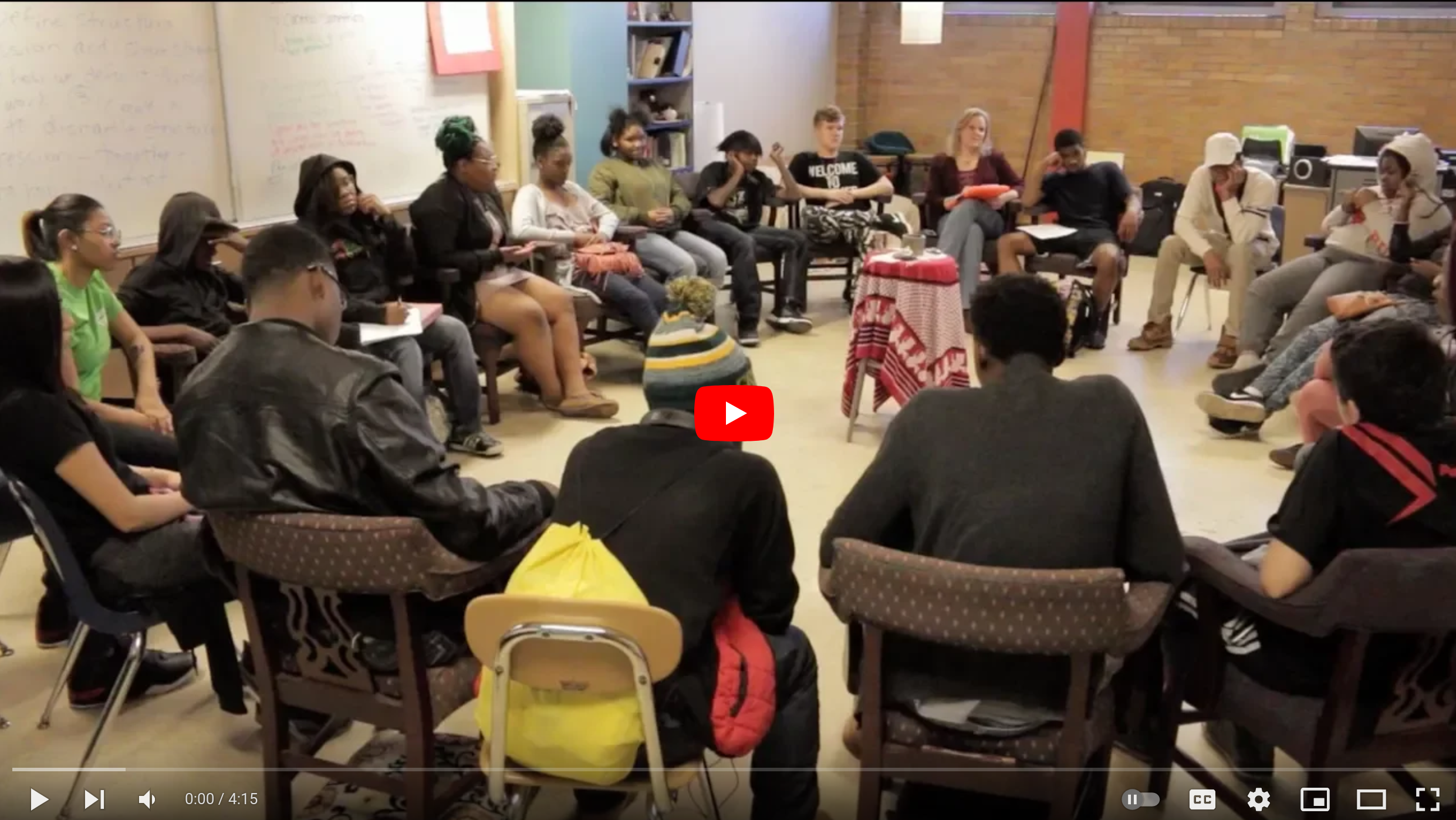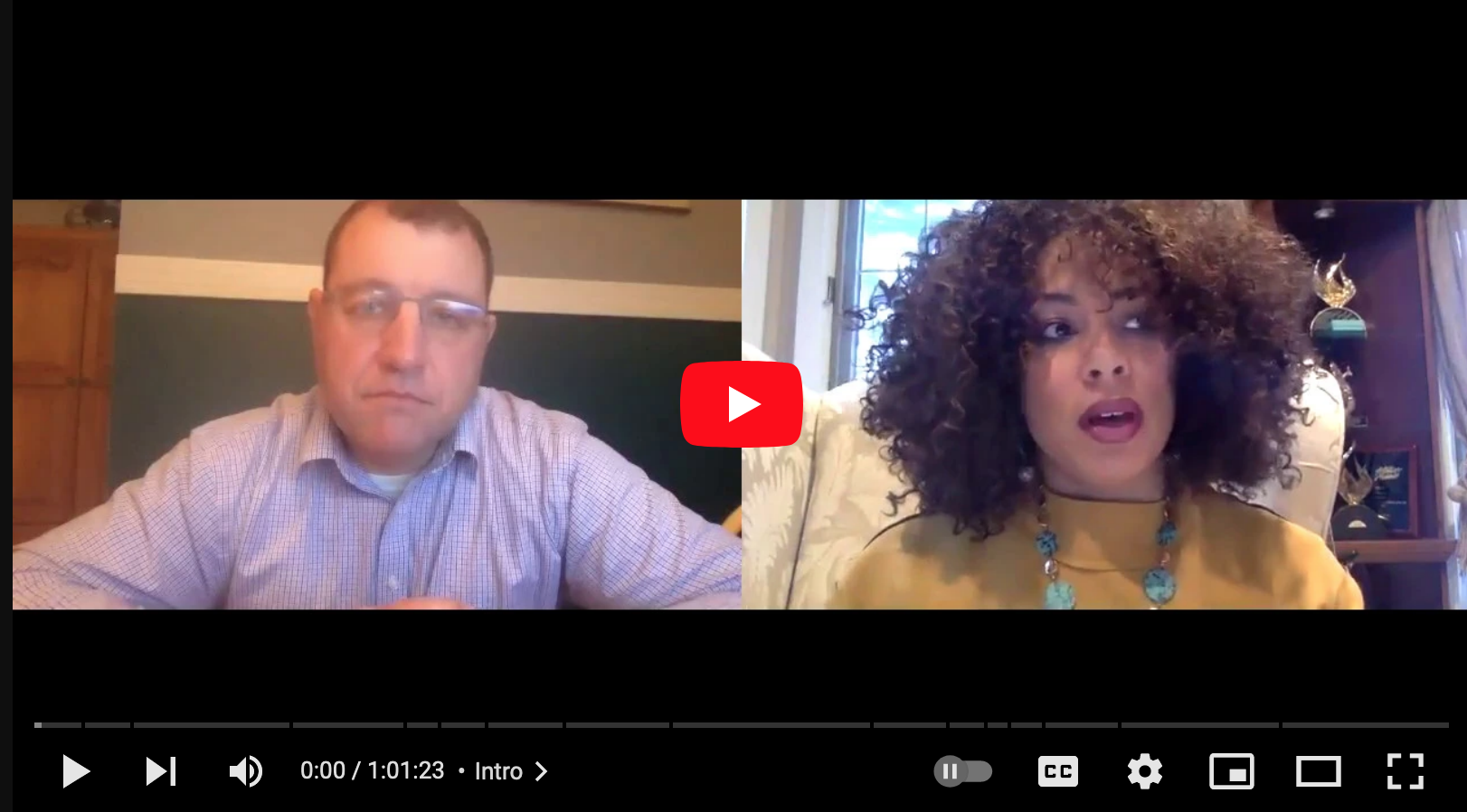News & Announcements
- Details
- Written by Kristin Oakley
Schools across the country are moving away from an era of zero-tolerance policies and shifting toward methods that involve restorative justice, encouraging students to resolve their differences by talking to each other rather than resorting to violence. In New York City, five schools that have implemented this system are already seeing results. NewsHour Weekend's Megan Thompson reports.
- Details
- Written by Laura Mirsky
The city of Detroit has been plagued by some of the worst crime and violence in the U.S., along with rampant student expulsion, dropping out and truancy. 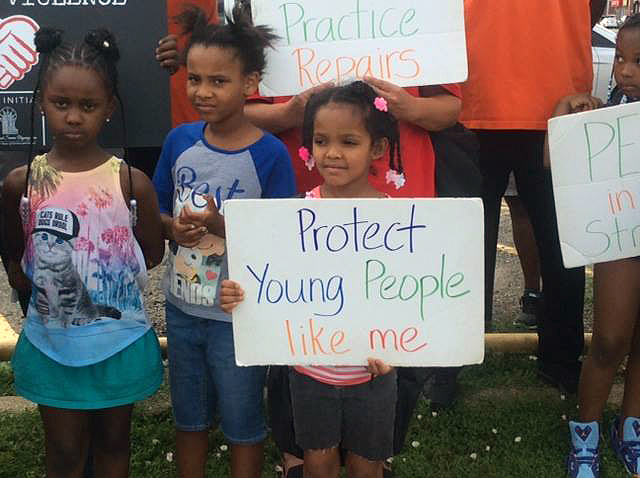 Children at a peace walkBut thanks to an IIRP project, restorative practices are taking hold in Detroit's neighborhoods, schools and systems. Individuals are becoming active stewards of their community, as elders and young people are learning processes that repair harm and rebuild relationships.
Children at a peace walkBut thanks to an IIRP project, restorative practices are taking hold in Detroit's neighborhoods, schools and systems. Individuals are becoming active stewards of their community, as elders and young people are learning processes that repair harm and rebuild relationships.
Detroit community members are eager to share their successes and learn from practitioners from around the globe at "Strengthening the Spirit of Community," the IIRP World Conference in Detroit this October.
"They want to celebrate and share the progress they’re making in their city and hear what other places are doing with similar challenges," affirms Alice Thompson, CEO of IIRP partner Black Family Development, Inc. (BFDI), which is hosting the conference.
- Details
- Written by IIRP Staff
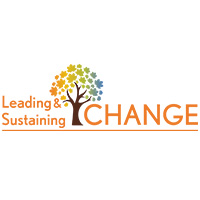 Breakout Sessions
Breakout Sessions
- A Dynamic Blended Family: When Restorative Practice Marries Family Therapy – Anne Martin, Ph.D., Jennifer Bowen, M.Div., RMFT, RP (powerpoint)
- Becoming a Restorative Community: The Journey of ChildStrive – Mary Cline-Stively, M.A., Rebecca Mauldin, M.P.A. (powerpoint)
- Brighter Futures: A Vision for a Restorative Learning Community in Dublin, Ireland – Emma Wheatley, Karen Mooney (powerpoint, handout)
- Bringing Ontario's Equity and Inclusion Education Strategy to Life – Laura Di Ianni, M.Ed., Mike O’Neill (powerpoint)
- Building a Restorative Toolkit: One Technique at a Time – Sue Jamback, Tyler Radtke (powerpoint)
- Change the Conversation, Change the Culture – Lee Rush (handout, booklet, powerpoint)
- Circling Closer to Ourselves: Mindfulness and Self-Directed Neuroplasticity in Restorative Practices – Jeff Catania (Google Doc links)
- "Cultivating Community" Restorative Practice School Projects: Measuring Our Impact – Danielle Hunter, James Reilly (handout, powerpoint)
- Dynamic CBO/School District Partnerships: Effective Collaboration Transforming Schools to Restorative Communities – Lucille Rivin, Matthew Guldin (powerpoint, handout 1, handout 2, handout 3, handout 4, handout 5, handout 6, handout 7)
- Education as a Community of Care: Walking the Restorative Talk to Build Inclusion – Kelly Krug, Sayema Chowdhury (powerpoint)
- Family Group Conference for Child Welfare and Juvenile Delinquency: A UK Perspective – Shahed Chowdhury, Ph.D. (powerpoint)
- From Victim and Murderer to Allies and Friends Changing the Justice System – Glen Flett, Margot Van Sluytman, M.A.,
CSJA (paper) - Healing a People: How Restorative Practices Can Help Repair the Harm of the Past – Cordell W. Riley, M.Sc., JP, Hashim Estwick, Lynne Winfield, FCIS (powerpoint)
- Institutional Change for Developing Compassion Integrity – Dave Trejo (powerpoint)
- Leading and Sustaining Restorative Practices in Schools: The Journey of Administrators and Teachers in Toronto – Christina Parker, Ph.D., Fiona Brougham, M.T., Judith Kramer, M.Ed. (powerpoint)
- More Than a Shame: Knowledge Mobilization and Theories of Change – Rick Kelly (handout, powerpoint)
- Motivational Interviewing: A Restorative Practice Approach for Guiding and Sustaining Change – Richard Rutschman, Ed.D. (powerpoint - pdf format)
- No One Listens to Me!: Restorative Parenting Giving Voice to Children and Parents – Albert Felts, M.A., BCE, Angela Isenberg, BCE (powerpoint)
- Organizational Structure for Improving School Culture: Doing Whatever It Takes to Build a Strong Foundation – Janique Cambridge, M.Ed., Shanell George, M.S.Ed. (powerpoint)
- Panel – Indigenous Communities Engaging in Restorative Action to Promote Reconciliation – Bryan Trottier, Donald Nicholls, Gayle Desmeules, Jessica Wolfe, Kirsten Manley-Casimir, Ph.D., Losty Mamianskum (powerpoint)
- Panel – Leading Change Through Restorative Justice Approaches – Bruce Schenk, Cpl. Darren Munroe, Howard Sapers, Jordan Diplock, Kelly Adamson, M.A., CVA, Selena Guildford, Tim Chapman (paper)
- Panel – Taking Restorative Practice into the Workplace: Learnings and Challenges – Anne Martin, Ph.D., Leslie Macleod, LL.B., LL.M. (ADR), Mark Vander Vennen, M.A., M.Ed., R., Scott Milner, Terry O’Connell (powerpoint 1, powerpoint 2, powerpoint 3)
- Peacemakers: Peers Helping Peers to Solve Schoolyard Conflicts – Stephen Young (powerpoint, handout 1, handout 2, handout 3, handout 4)
- Project Blueprint: Increasing Police Referrals to Community-Based Restorative Justice Programs – Cpl. Darren Munroe, Jordan Diplock (paper)
- Realizing the Potential for Restorative Communities in Rural Northwest Alberta – China Sieger (paper)
- Refugee Displacements and the Impact on Community Life – Alia Sheety, Ph.D., Frida Rundell (powerpoint)
- Reorienting Organizations: New Management Ideas Supported by Restorative Practices – Stijn Deprez (powerpoint)
- Restorative Circles: Implementation, Building Community and Practicing Mindfulness – Amanda Cannon, M.Ed., Amanda Ramkarran, M.Ed. (handout, powerpoint)
- Restorative Practices – The Process Works! – Jon McGill (powerpoint, handout)
- Restoring “Explosive” Students: Strategies for Students with Chronically Challenging Behaviors – Shawna Griffin, M.S. Ed.S., Stephen Shepherd, M.A., Ed.S. (powerpoint, handout)
- Restoring the Urban Gang Member: “Keeping the Brain and Body in Mind” – Carlos Alvarez, M.A. (powerpoint - pdf format)
- Social Justice Dialogues in College Residence Halls: Building Relationships and Addressing Impact – Alex Boesch, Magdalena Gracia, Rafael A. Rodriguez (powerpoint)
- Some Challenges in Sustaining Restorative Justice in the Criminal Justice System: Lessons from Northern Ireland – Tim Chapman (powerpoint)
- Sustainable Leadership in Restorative Practices: Making the Changes Stick – Leonard Cheong, Noorzura Amir Noordin (powerpoint 1, paper 1, powerpoint 2, paper 2)
- Sustaining Restorative Practices in Higher Education Through Residential Curricula – Kaleigh Mrowka, Lauren Teresa Mauriello (handout, paper 1, paper 2, paper 3, paper 4)
- System-Wide Change: Building Strategy Networks to Grow Restorative Practices in a School Board Region – Scott Milner (powerpoint)
- The Times They Are A-Changin": Restorative Practice and the Workplace – Anne Martin, Ph.D., Bill Bickle (powerpoint)
- Tools and Successful Practices for Restorative Schools – from Those Who Use Them! – Peggy Hargrave, Saundra Reynolds, Shelley Steele, Stan Baker, Stephen Young (powerpoint)
- We Wear the Mask: Can Restorative Practices Realistically Help Marginalized Communities Heal from Systemic Oppression? – Lori Harris, MRPYC (powerpoint)
- Whose Religion Matters?: Exploring Emotional and Cognitive Responses to Boosting an Interfaith Restorative Community – Alia Sheety, Ph.D., Lisa Ratmansky, M.A., Rasheeda Ahmad, Ed.D. (powerpoint)
- Why Restorative Practices Work in Any Context: The Importance of Explicit Practice – Terry O’Connell (powerpoint)
- Widening the Lens: Sustaining Restorative Practices in Elementary Schools by Making Connections – Cathy Hird, M.S.W. (handout 1, powerpoint, handout 2)
- Workplace Restorations in Conflict Situations – Blaine Donais, LL.B., LL.M. (ADR), RP, Michelle Phaneuf, P.Eng., C.Med. (powerpoint)
- Details
- Written by Julia Getty
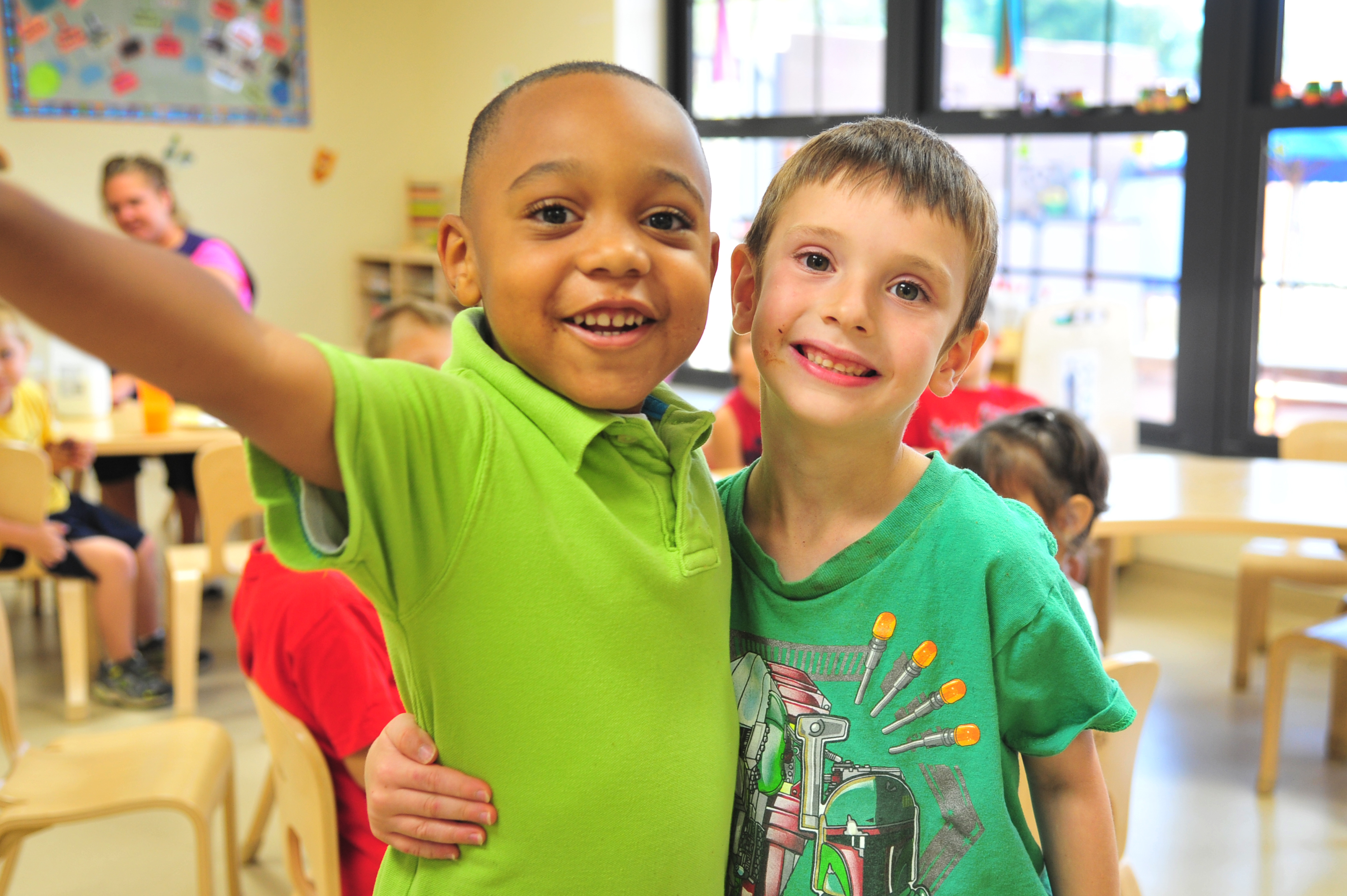
Preston's Ph.D. research is focused on developing restorative concepts as a narrative approach to assessment and diagnosis of ADHD (attention-deficit/hyperactivity disorder) and other social and emotional issues that affect children. The narrative therapy approach separates the individual from the behavior. It allows children to examine their own problematic actions as external attributes — mistakes that can be corrected — rather than integral, unchangeable elements of their personality or identity.
Her experience in both law enforcement and education makes her uniquely qualified to reach some of society’s most at-risk children. When she worked with first-time offenders for the Thames Valley Police in the U.K. in the 1990s, Preston noticed that most of these youth also struggled in school. Their difficulties usually involved communicating their thoughts and feelings to peers and adults. When her department was trained in the principles and theory of restorative practices, she quickly recognized the need to employ them with children. So in 2008, Preston left law enforcement to train as a primary school teacher. Her work centered on four-to-11-year-olds who struggled with social-emotional learning (SEL).
Working with children who are unengaged in learning or falling behind their peers in school, Preston has found that their academic or social needs are often masked by their challenging behavior. Employing restorative practices helps her assess the source of the students' problems. Are there specific learning difficulties? Are environmental factors such as home life, bullying, lack of sleep or poor nutrition responsible?
- Details
- Written by John W. Bailie, Ph.D.
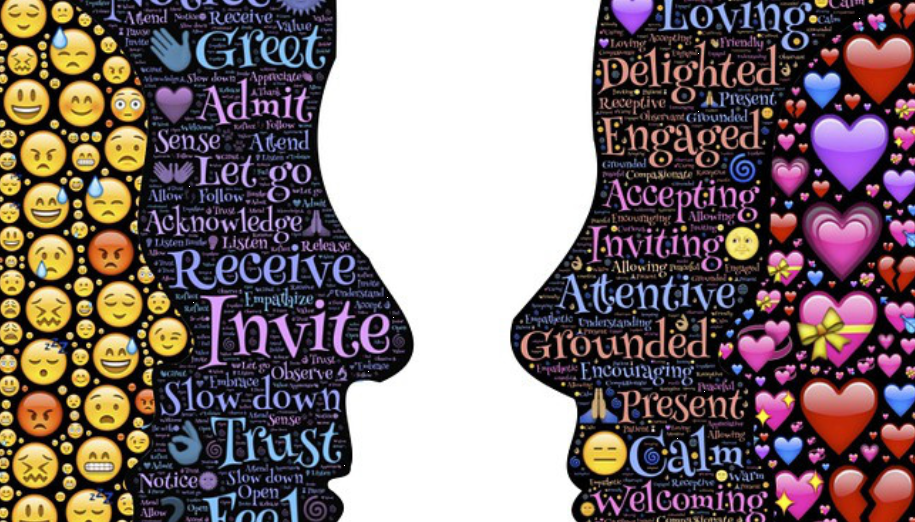
Empathy is overrated. I know this is heresy. Before you light your torch and grab your pitchfork, hear me out.
We live in a world suffused with psychological language. Even in fields that are not traditionally considered to be “touchy-feely,” leaders are likely to be expected to know how to increase their team’s emotional intelligence, help employees build emotional self-management skills or increase a sense of belonging and community.
This is good. My “day job” is focused on teaching others these skills. In fact, my institution has helped lead the creation of an emerging social science entirely focused on how to strengthen relationships between individuals as well as social connections within communities.
In part, this mirrors the positive development of the field of psychology as a whole. As we understand more about the mind of the human person and how we relate to each other, we apply those insights to a wider range of settings – such as workplaces. On the other hand…
We have also seen the rise of popular psychology and an entire industry related to self-help and pseudo-scientific ideas about emotion. These ideas are often based on what we wish were true about people, instead of the reality of human relationships. One perfect example is the perceived role of empathy in conflict.
The ability to understand another’s feelings and thoughts from their point of view is a great skill. Honing your ability to do this will help you make more nuanced decisions and relate to others with more skill and sensitivity.
But here’s the problem. Empathy has become a bit of an idol, a panacea, a magical thing that promises to end all conflict and allow leaders and staff to exist on a higher and more sensitive plane of existence.
As I’ve discussed in this blog before, most people seek to avoid conflict. Accordingly, popular pseudo-psychology has encouraged the belief that if we just had more empathy we’d have less conflict. So, we don’t need to do the difficult work of confronting people on their behavior, which is really unpleasant and scary. We just need to start empathizing more! After all, unlike leading conflict, empathizing makes me feel great about myself and is less risky. Problem solved!
I exaggerate, but not by much in the case of some leaders and workplaces.
Empathy is essential to healthy human relationships, but it’s not a cure-all. The presence of empathy does not negate the need for limit-setting and does not necessarily lead to behavior change.
Simply empathizing changes nothing. Behavior change requires pressure, concrete plans, and a willingness to move beyond talking about feelings and into action. Expression of empathy is a good beginning to a conversation, but it’s not an end unto itself.
Empathy is only one good among many in the list of leadership skills and abilities. An over-emphasis on empathy in leadership can lead to a reluctance to cause others discomfort. After all, if you really empathized with others, you wouldn’t want to cause them discomfort, right?
This is a serious problem in many workplaces. As a leader, a big part of your job is to make other people uncomfortable on a regular basis. Being uncomfortable is a natural part of learning and the development of expertise. And as a leader, you should be the teacher-in-chief before you are the empathizer-in-chief. Be an empathetic teacher, not a teaching empath.
Too much reliance on empathy can even lead to rewarding good work with creepy things like this.
Overplaying the importance of empathy can also lead to the erroneous belief among colleagues that they should never be made to experience difficult, negative or uncomfortable feelings.
Here’s an example from my personal life. I once confronted someone I was close to about their pattern of manipulatively using anger, threats and histrionics during conflict. I discussed how scary, difficult and damaging this behavior was for me and others.
The response from that person was, “How can you say these things to me? How do you think it makes me feel when you tell me things like this?” To which my response was, “Well, I assume you feel bad. And that would be appropriate.” We are no longer close. And that’s a good thing.
The most effective leaders are empathetic to those around them in a general way, while also being able and willing to cause discomfort to others as needed. Growth and learning requires some amount of pain and sacrifice.
None of us feels what everyone around us is feeling, nor should we. That would be really exhausting and unhealthy. We understand the feelings of others. We care about the experiences of others. We listen to others. But their feelings are their feelings and our feelings are our own. How to make sense of that information and what you do with it is what matters most when leading conflict.
Visit IIRP President John W. Bailie's blog, Leading Conflict.
- Details
- Written by Kristin Oakley
A Milwaukee school shares how they are working with students and staff to take responsibility for implementing talking circles.
- Details
- Written by IIRP Staff
Univest Corporation announced a $10,000 donation to Buxmont Academy on March 7, 2018. Univest made this donation through Pennsylvania’s Educational Improvement Tax Credit (EITC) program, 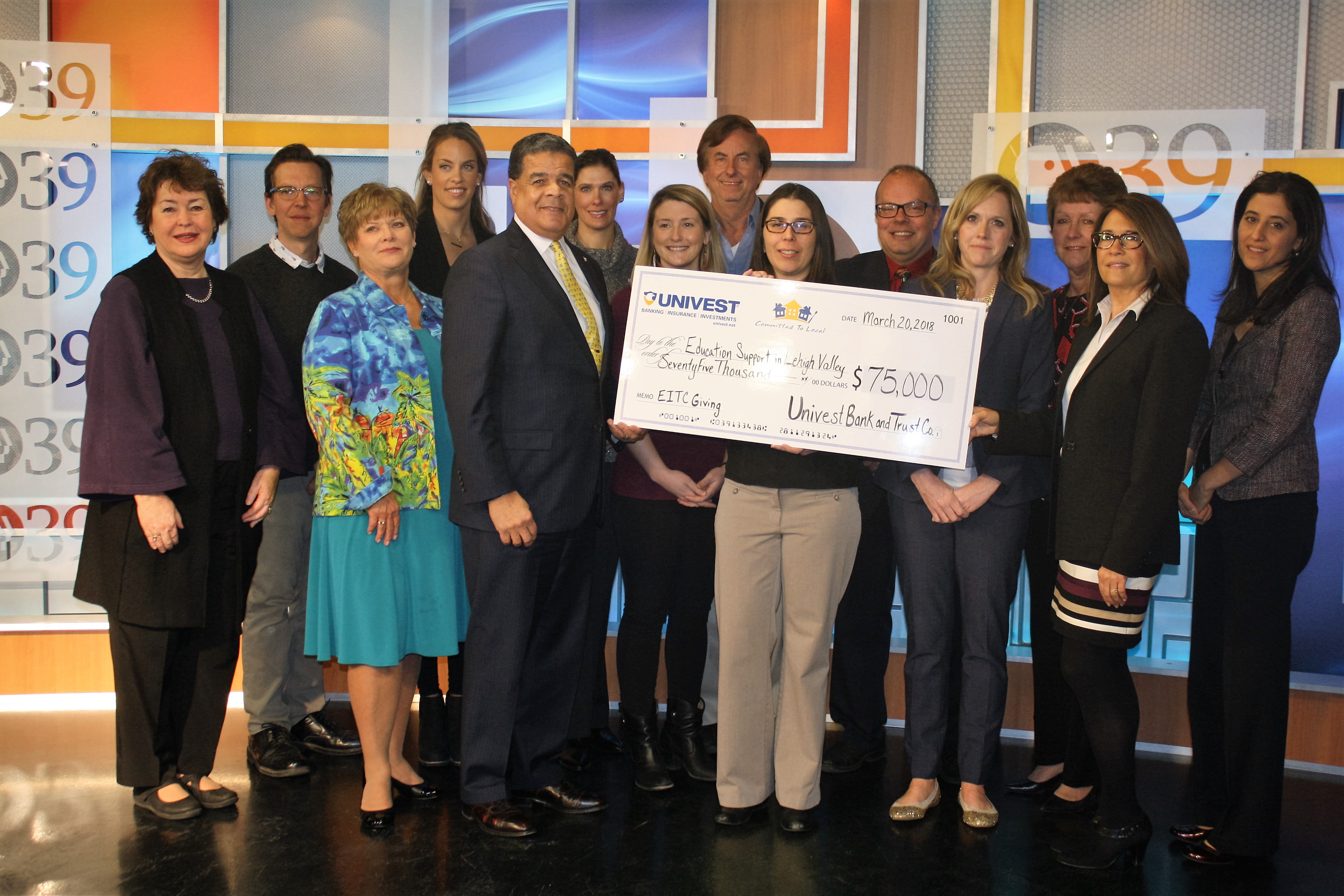 Buxmont Academy Executive Director Michael DeAntonio, Ph.D., is fifth from the right.
Buxmont Academy Executive Director Michael DeAntonio, Ph.D., is fifth from the right.
enabling them to direct their Pennsylvania taxes to Buxmont Academy. This donation supports educational opportunities for financially disadvantaged students at Buxmont Academy.
Buxmont Academy is dedicated to providing education and counseling to youth in eastern Pennsylvania. A model program of the International Institute for Restorative Practices (IIRP), Buxmont Academy operates 5 school/day programs.
Univest Corporation awarded $75,000 to nine educational organizations in Lehigh County that qualify for the Pennsylvania EITC program. Buxmont Academy Executive Director Michael DeAntonio, Ph.D., is fifth from the right.
- Details
- Written by Joshua Wachtel
It’s been less than a year since teachers and administrators at Charles W. Henry School (K-8) in Philadelphia, Pennsylvania, began incorporating circles and other restorative practices through the SaferSanerSchools™ program alongside the Second Step Program, which teaches students skills for developing emotional intelligence. 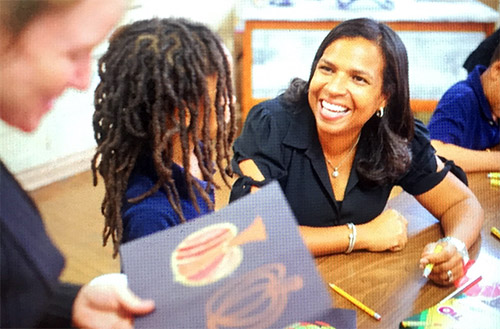 CW Henry Principal Fatima Rogers with studentsBut already the culture of the school has shown marked improvement, with office referrals down and teachers helping students resolve conflicts in new ways.
CW Henry Principal Fatima Rogers with studentsBut already the culture of the school has shown marked improvement, with office referrals down and teachers helping students resolve conflicts in new ways.
Second Step, a social-emotional learning (SEL) program created by the global nonprofit, Committee for Children, provides a curriculum to teach students skills to recognize and manage emotions and improve relationships. The International Institute for Restorative Practices (IIRP) SaferSanerSchools™ program provides professional development and ongoing coaching to help school communities cultivate healthy relationships, improve culture and climate, and resolve problems collaboratively and constructively.
Many schools across the country are implementing both SEL and restorative practices, and they are asking for support to align and integrate their efforts for ease of use and efficiency of implementation. In this project, all partners are learning what it takes to integrate restorative practices and the Second Step Program to make it easy for adults to implement them together with fidelity. The long term goal is to create implementation resources that can be used in schools across the country.
“When adults provide a restorative environment coupled with SEL skill instruction to help students successfully participate in that framework, everyone in the learning environment has a better experience,” comments Juliet Kandel, Implementation and Partnerships Manager of the Committee for Children.
CW Henry Principal Fatima Rogers has been instrumental to fostering the changes in the school. Presenting at recent conferences about the collaborative effort, Rogers shared that she is now thinking differently about her leadership style. For instance, she has opened herself to hearing staff concerns, especially the needs they have expressed regarding having enough time to implement these two new programs well. Consequently, she has helped arrange teachers' schedules so they get the support they need to learn skills and plan their lessons.
“The most powerful practice that we’re getting good at is circles,” observes Rogers. Some teachers are holding circles every day after recess. “We’re getting so much information in the circles: who had problems, who had a great time, who had no one to play with,” she explains. “We’re solving conflicts that no one knew about.”
IIRP Instructor Shermont Fox has worked extensively throughout the duration of the project with Committee for Children’s Juliet Kandel and the Henry leadership team. He is also observing teachers, providing feedback and coaching them on how to run circles. Fox finds great synergy between Second Step's instructional concepts and restorative processes.
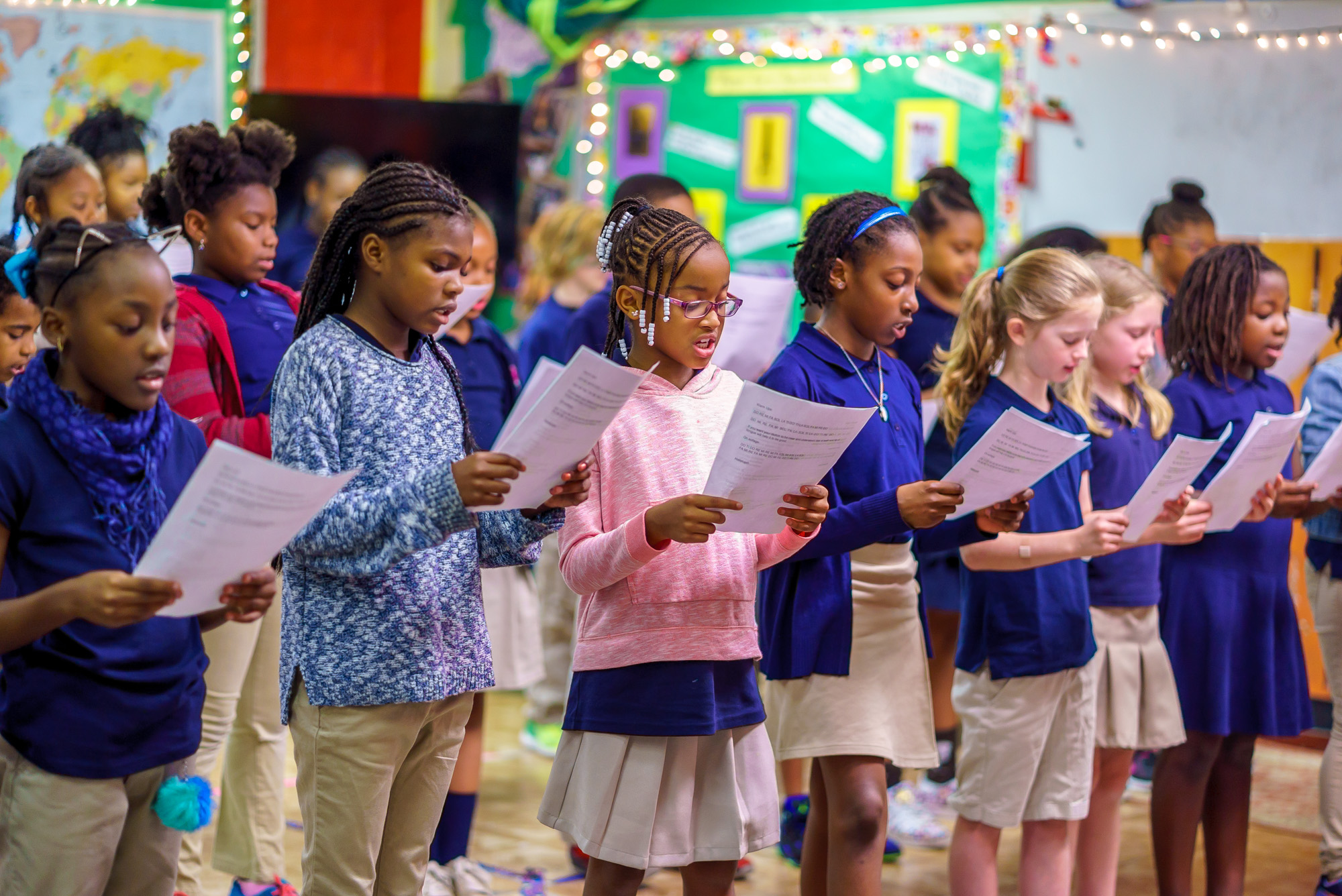 For instance, Second Step provides lessons on what it means to be a friend and how to be empathetic. One day a first grader said in a circle after recess that she didn’t have anyone to play with. The teacher said she was sorry to hear it and asked the class what they could do about it. One student said, “I’ll play with you tomorrow.” Kids are going beyond learning about friendship and empathy – they are putting that knowledge into practice!
For instance, Second Step provides lessons on what it means to be a friend and how to be empathetic. One day a first grader said in a circle after recess that she didn’t have anyone to play with. The teacher said she was sorry to hear it and asked the class what they could do about it. One student said, “I’ll play with you tomorrow.” Kids are going beyond learning about friendship and empathy – they are putting that knowledge into practice!
“This is so groundbreaking," comments Fox. “We’re aligning restorative practices with Second Step, one of the top-tier SEL programs in the country.” Adds Rogers, “Kids themselves are becoming the problem solvers.”
The collaboration is having an impact on relationships between staff and students. Henry’s School-Based Teacher Leader Farrell Greenhall has taken a lead role in overseeing the implementation of Second Step and restorative practices. She visits a lot of classes. One day a student mouthed off to her for no reason. Rather than respond punitively, she waited until she had time and pulled the student aside. She asked an open question, “Did I do something to offend you?”
It turned out the student was upset about the no-cell phone policy. Greenhall allowed the student to explain why she didn’t like it. “I don’t feel safe without a cell phone,” she argued. “What if there’s a fire?”
Greenhall explained what the procedures would be if something like that happened. The student accepted the explanation and the two have had a good relationship since.
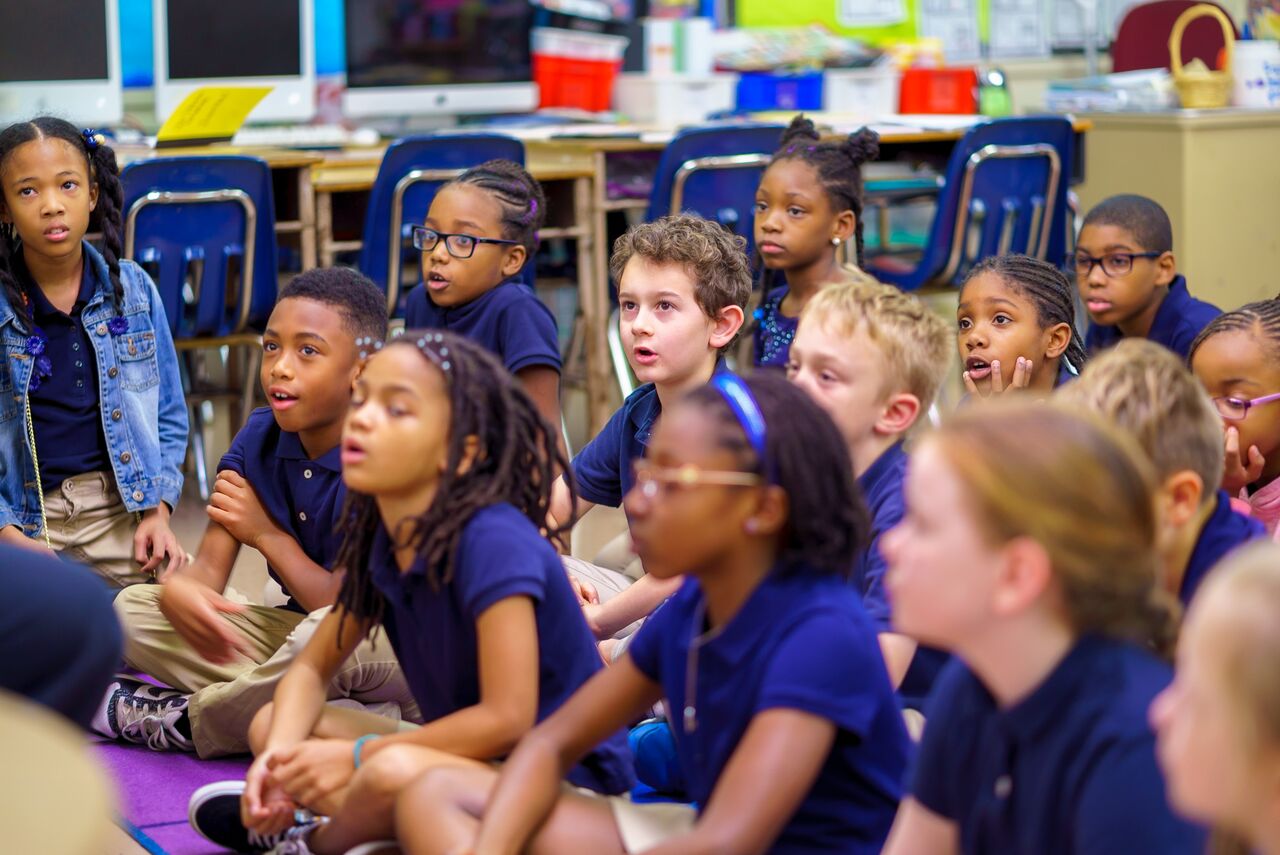 “What we’re seeing at CW Henry is teachers and administrators being given the knowledge, the techniques, the process and the space to practice," adds IIRP Director of Continuing Education Keith Hickman. "Consequently, they are becoming more restorative educators and leaders.”
“What we’re seeing at CW Henry is teachers and administrators being given the knowledge, the techniques, the process and the space to practice," adds IIRP Director of Continuing Education Keith Hickman. "Consequently, they are becoming more restorative educators and leaders.”
Second Step’s Juliet Kandel appreciates how restorative practices is enhancing social-emotional learning in the school. “I’ve learned that there is great power in looking at each human interaction and policy in a school and asking, ‘Is it restorative?’” she affirms.
“I am so excited about this collaboration," adds Fox. "We are helping students deal with their social emotional needs, their feelings and each other.”
Kandel concurs: “We get to do authentic work, supporting staff and students at Henry, knowing that, eventually, our work will have a positive impact on thousands of school communities.”
Watch a video about this project as presented recently at the 2018 National Title I Conference in Philadelphia.
- Details
- Written by John W. Bailie, Ph.D.

The IIRP's second president, John W. Bailie, Ph.D., continues to explore the issue of conflict in the workplace on his personal blog Leading Conflict. With this piece, he launches a new series of articles to "explore some of the most common behavior profiles that persistently generate toxic conflict and provide tips on how to respond to each."
In the article Creative vs. Toxic Conflict at Work, I discussed one of the key features that distinguishes toxic conflict from creative conflict.
Creative conflict is rooted in the dynamics between people. In creative conflict, the motives and goals of group members are typically healthy and focused on a sincere desire to solve concrete external problems and challenges.
Toxic conflict is typically rooted in the personalities of individual people. While creative conflict is rooted in an external problem, toxic conflict is rooted in the problematic behavior of one or more individuals.
Toxic conflict is hard on a team. Thankfully, most of the behavior that generates toxic conflict is common and predictable.
This means that you can plan ahead for behaviors that are certain to recur. Think of these “Toxic Workplace Behavior Profile” articles as your top-secret files on how to prepare and respond strategically to the most disruptive and toxic behaviors in your workplace.
- Details
- Written by Kristin Oakley
In this interactive webinar, IIRP Graduate Student Keisha Allen of Detroit, Michigan, spoke with Provost Craig Adamson, Ph.D., about how she is using the knowledge gained in her courses to directly impact the children and families she works with in her city.

Restorative Works Year in Review 2023 (PDF)
All our donors are acknowledged annually in Restorative Works.

